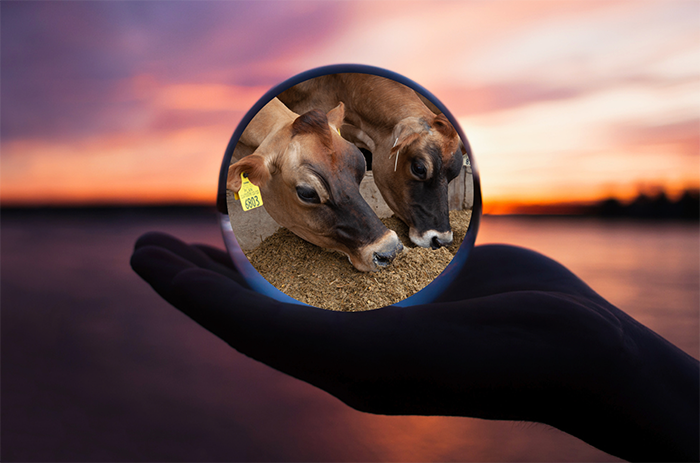
Earlier this month, I was asked to speak on the future of forage in the dairy ration. Futuristic talks are both good and bad. On the one hand, it’s difficult to know what will happen before it happens (bad), so you have to look at recent trends and efforts currently being made at the research level. On the other hand, if you miss the mark on future predictions, people will hopefully have forgotten all about the presentation (good).
As an overview, it’s unlikely that there will be any “new” forage crops to feed. Rather, most of the changes that occur will be to make what we already have better. Further, the importance of forage in the ruminant diet will remain as it always has been. Fiber is an essential nutrient to maintain rumen health.
I don’t have the space here to discuss everything I talked about during the presentation, so I’ve picked out three diverse ones.
Reduced- or short-statured corn
Corn silage has been and will remain the dominant forage source in most conventional dairy rations. We can argue whether that’s good or bad, but we can’t deny it.
What will change in the future is the phenotype of corn, or how it looks. Lodging has always been a problem with corn, especially when subject to high-wind events. To address this lodging problem, corn breeders have started to develop hybrids that are much shorter than conventional corn . . . as in 3 to 6 feet shorter in stature. These shorter hybrids have the same number of leaves as their taller counterparts, but the stalk internodes between leaves are reduced in length.
The first hybrids are being developed for grain production, and initial field results indicate that grain yields are comparable to the taller hybrids. These shorter hybrids are already being grown in Europe and to a limited degree in the U.S.
Of course, dairy producers are more concerned about silage. The reduced-statured hybrids have a higher pith-to-rind ratio, or thicker stalks. This translates to a higher neutral detergent fiber (NDF) digestibility.
Although there’s still a lot of breeding and evaluation to be done, early silage yield and quality results from the shorter hybrids are comparable to taller corn hybrids. In discussions with several people in the industry, they feel pretty confident that all corn will be shorter statured within 20 years.
Emergency forages no more
I discussed winter and summer annual forage crops in different sections during my presentation, but I’ll lump them together here. Most of these used to be referred to as “emergency” forages 20 years ago, meaning only grow them if you have to. That has changed and they will continue to find their way into the “foundational” forage category.
There are a lot of reasons for this change. Winter cereals and summer annuals such as the sorghum species fit nicely into a crop rotation. Further, there has been a big push for cropping systems that maintain living roots, plant diversity, and soil health. Government cost sharing is available for such efforts, which helps the cause.
Practically speaking, the sorghum species (sudangrass, sorghum-sudangrass, and forage sorghum) increasingly offer more in terms of desirable traits and water use, with the latter being a big concern in the West. In the near future, prussic acid-free hybrids will be available. Several breeding companies are investing big in sorghum species. That tells me that the trend line is heading north.
The one thing I see holding back the growth of annual forages on larger dairy farms is the need for separate storage structures or piles.
Grazing will remain an option
In the current world of fewer dairies but thousands of cows per farm, some people might think that the days of grazing dairies are numbered. They would be wrong. As with dairy grazing, many people have been predicting the same demise for small square hay bales for the past 20 years, but it just hasn’t happened thanks to thousands of people with horses.
Grazing will remain the preferred system on many dairies for a plethora of years to come. This will occur, if for no other reason, because there is still a strong market for organic milk, and organic milk producers are required to graze.
But beyond the organic milk requirement, a grazing system is about the only viable way to enter the dairy business. Further, not everybody wants to manage a large dairy. There’s no right or wrong here, just options.
I don’t know if it will happen, but I believe dairy heifer grazing is an underutilized tool. I’d like to see more people get into the business of custom dairy heifer grazing. Once virtual fence technology is perfected, this could prove to be a valuable tool for cows or heifers.
Yes, there’s more
You might have noticed there are many important topics not discussed. Alfalfa hasn’t been mentioned, but I can assure you there was a large section in the presentation. The same is true for harvesting advancements. These are topics for another day.

